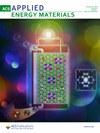温度和乳酸菌添加剂对枯萎苜蓿青贮质量和微生物群落的影响
IF 5.4
3区 材料科学
Q2 CHEMISTRY, PHYSICAL
引用次数: 0
摘要
本研究探讨了不同温度(35℃高温和平均 25℃的室内环境温度)和乳酸菌添加剂(植物乳杆菌、布氏扁豆乳杆菌或植物乳杆菌和布氏扁豆乳杆菌的组合)对苜蓿青贮饲料的化学成分、发酵质量和微生物群落的影响。经过 60 天的腐熟期后,观察到温度和添加剂之间存在显著的交互作用,影响了青贮饲料的干物质(DM)、粗蛋白(CP)、酸性洗涤纤维(ADF)和中性洗涤纤维(NDF)(p < 0.05)。温度对青贮饲料的 pH 值有非常显著的影响(p 0.05),而接种添加剂对乳酸、乙酸和丁酸有显著影响(p > 0.05)。在青贮后微生物群落的动态变化方面,三种菌的添加提高了乳酸菌的丰度。在所有处理组中,使用复合菌的处理组发酵效果最好,说明复合乳酸菌在高温发酵中的效果优于单一菌。综上所述,本研究解释了不同温度和乳酸菌添加剂对苜蓿发酵质量和微生物群落的影响,提高了我们对高温下苜蓿相关青贮机理的认识。本文章由计算机程序翻译,如有差异,请以英文原文为准。
Effects of temperature and lactic acid Bacteria additives on the quality and microbial community of wilted alfalfa silage
This study investigated the influence of different temperatures (35℃ High temperature and average indoor ambient temperature of 25℃) and lactic acid bacterial additives (Lactiplantibacillus plantarym, Lentilactobacillus buchneri, or a combination of Lactiplantibacillus plantarym and Lentilactobacillus buchneri) on the chemical composition, fermentation quality, and microbial community of alfalfa silage feed. After a 60-day ensiling period, a significant interaction between temperature and additives was observed, affecting the dry matter (DM), crude protein (CP), acid detergent fiber (ADF), and neutral detergent fiber (NDF) of the silage feed (p < 0.05). Temperature had a highly significant impact on the pH value of the silage feed (p < 0.0001). However, the effect of temperature on lactic acid, acetic acid, propionic acid, and butyric acid was not significant (p > 0.05), while the inoculation of additives had a significant effect on lactic acid, acetic acid, and butyric acid (p > 0.05). As for the dynamic changes of microbial community after silage, the addition of three kinds of bacteria increased the abundance of lactobacillus. Among all treatment groups, the treatment group using complex bacteria had the best fermentation effect, indicating that the effect of complex lactic acid bacteria was better than that of single bacteria in high temperature fermentation. In summary, this study explained the effects of different temperatures and lactic acid bacterial additives on alfalfa fermentation quality and microbial community, and improved our understanding of the mechanism of alfalfa related silage at high temperatures.
求助全文
通过发布文献求助,成功后即可免费获取论文全文。
去求助
来源期刊

ACS Applied Energy Materials
Materials Science-Materials Chemistry
CiteScore
10.30
自引率
6.20%
发文量
1368
期刊介绍:
ACS Applied Energy Materials is an interdisciplinary journal publishing original research covering all aspects of materials, engineering, chemistry, physics and biology relevant to energy conversion and storage. The journal is devoted to reports of new and original experimental and theoretical research of an applied nature that integrate knowledge in the areas of materials, engineering, physics, bioscience, and chemistry into important energy applications.
 求助内容:
求助内容: 应助结果提醒方式:
应助结果提醒方式:


